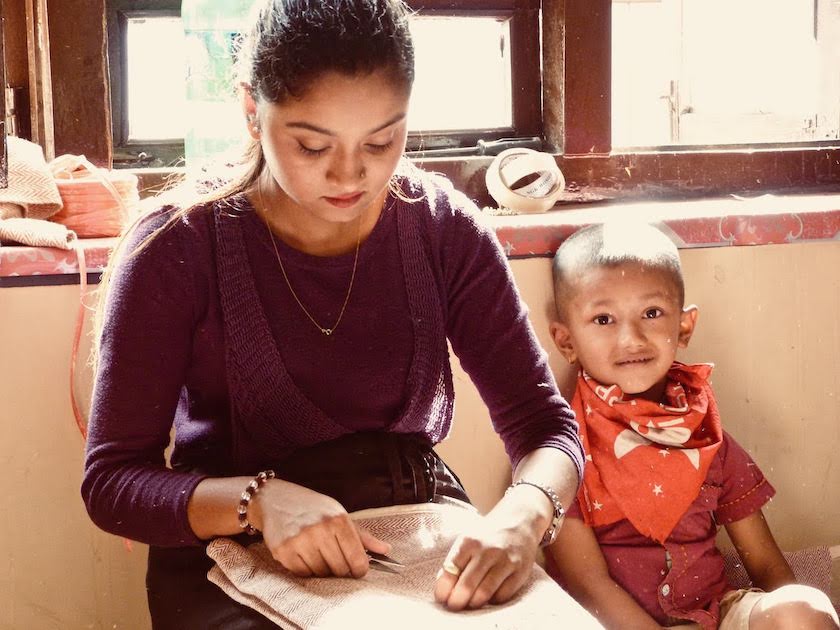Hemp - Cloth of Centuries
Let me tell you a little story about the fabric that is made out of the fibre so controversial it was restricted and stopped being produced in some countries. Perhaps it is due to its resemblance to a widely known plant that affects the brain and body. However, this particular plant doesn't have hallucinogenic powers like its cousin marijuana, but, in-fact is healthy for you and its fibres can be used for making yarn and create beautiful apparel.

A bit of a history
Hemp - was one of the first domestically cultivated plant around 8000 B.C. ago in the Mesopotamia a territory of today's Turkey. Gradually it was widely spread around the Asian continent, especially India and China in around 2700 B.C. It reached Europe 400 years later. When silk was considered to be the cloth of a wealthy, Hemp was used to dressing the general population. It was so strong and durable that it was also used for making ropes, sails, bandages and even bed sheets.
Until 20th-century Hemp was one of the most abundant crops around Europe and North America until U.S. and Canada put a stop on cannabis cultivation in 1937.
The restriction has been lifted after the 2nd World War, but the popularity and the production have declined significantly. However, in the last few decades, the number of companies trading and manufacturing hemp products has increased considerably. Leading producers today are China, India and Nepal. North American market is growing since the U.S. had lifted restrictions in cannabis plantation in 2014 and Canada legalised hemp production and sale in 1996.
Hemp is one of the most versatile and eco-friendly fabrics in the world. Some experts claim it can be used in making 25,000 different products from clothing to food and toiletries. Not only it is renewable, but it thrives without using heavy pesticides or insecticides, controls topsoil erosion and produces up to 250% more fibre per acre than cotton. Best conditions for producing high-quality Hemp is mild and humid climate like one in Nepal Himalayan region. It is durable and takes around 90 days to grow to a full crop of Hemp. Since this plant has been around in Nepal for centuries, local people have used to it and learned how to reap all the benefits it can provide. Most of our hemp comes from the mountains

Why Hemp?
1. Hemp is durable and stronger than any other fabric so product made from hep will last for many years compared to their competitors.
2. Hemp withstands every wash. It gets even better, fine and luxurious after each wash because of its natural light and lustre reflective qualities.
3. Hemp is very quick drying and breathable due to its superiors absorbency because of its porous nature.
4. Hemp retains colour better than cotton and other natural fibres.
5. Hemp products from U.V. light and it do not quickly fade or disintegrate due to sunlight.
6. Hemp is fully recyclable and biodegradable.

Process
Cultivating and harvesting
Cultivating and harvesting Hemp seeds need to be sown densely, so it grows into tall and slender stems. It likes a mild and humid climate; therefore, conditions in Nepal are ideal for it to grow. The harvesting starts when the plants begin to shed pollen way before seeds begin to set.
Retting
It is the process where a naturally occurring bacteria are used to break down the pectins of the fibre. Usually, it is soaked in the warm water for around ten days, where bacteria do its job.
Breaking and Scutching
Stems of Hemp get broken with a particular breaker sort of a roller or by a hammermill. Then broken fibre gets beaten, cleaned up and cut into the desired size during the process known as scutching.
Hackling and roving
The fibres get combed to remove and woody particles and aligned into continuous sliver. This gets twisted, strengthened and prepared for the spinning.
Spinning
Depending on the requirement for producing natural coarse yarn, it is spun while dry. Wetted fibre during the spinning makes slimmer and more delicate yarn.

Artisans
Recently we have collaborated with the community of the artisans from an earthquake-affected area in Nepal who hand weaves Hemp Products and makes naturally dyed quality products by using vegetable dyes.
Around 18,000 people have died, and over 20,000 injured, making more than millions homeless during Nepal's most significant natural disaster.
Today, these wonderful women weavers are clothed in strength and dignity by their hard and continuous work. They don't give up or pity themselves as they are too busy supporting their families and children by doing what they know best.
After careful consideration of product quality, we visited local workshops to ensure ethical working conditions and to record both: the story behind the craft and the financially independent women creating these products.
The beauty of the end product speaks for itself. Each piece is carefully crafted by hand – ensuring the drafting to detail and individuality of all Hemp handbags, Hemp backpacks and other Hemp accessories.
Products
Our products are not the cheapest. Why? That is because women weavers we work with getting paid well. They are not victims of the mass-production factories in Bangladesh or some parts of India.
For more information on our products, please contact us at connect@basantacrafts.com
Related Products

Kanapinė Rankinė
Ex Tax: €37.00